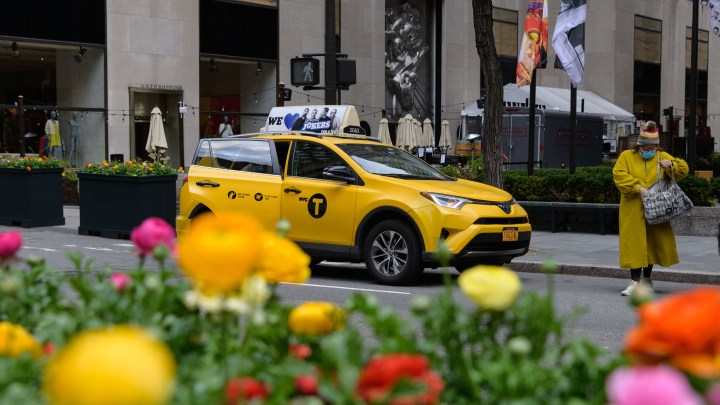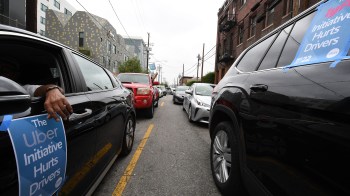
Uber and Lyft face old rivals: taxis

Wall Street has its eye on rising prices for Uber and Lyft rides over recent months.
While Lyft reported its first profitable quarter and Uber expects to do the same imminently, fare prices have continued to increase as the companies spend hundreds of millions of dollars to attract drivers, replacing those who defected during the pandemic.
According to an analysis of public data from New York and Chicago by investment advisory firm Gordon Haskett, the ballooning fares have rideshare companies ceding ground to an old rival: taxis.
Philadelphia musician Mike Bishop was looking for the best way to get to the Eagles football game Sunday. Parking’s too big of a pain, weekend transit was too slow, and Uber and Lyft rides were running about $40.
Then he remembered something he saw about an app for taxis called Curb.
“So, I gave that a shot, and [it] ended up being about half the price. And works just the same,” he said.
Bishop said he’s a millennial who hasn’t called a cab since before the dawn of ride-hailing apps, “and the cab driver had, like, the old credit card thing you had to, like, slide over and make a carbon copy of. Like, it was really old school.”
Now, what’s old school is new again.
“Taxis have had a second wind,” said Joe Schwieterman at DePaul University. The taxi industry has become more Uber-like, with apps to hail and pay for rides, he said. And now prices are competitive.
“So we’re gonna see the two sectors continue to kind of blend into one, I think,” Schwieterman said.
But it’s not just about the app. Those high surge prices that are sending people to taxis are what make rideshare apps successful, said New York University business professor Arun Sundararajan.
“Having this continuously varying price through the day, even if it makes some consumers uncomfortable, actually leads to a dramatically better service,” Sundararajan said.
Surge pricing can attract more drivers during busy times, so users don’t have to wait as long to find a ride. Taxis, however, are usually limited by local governments.
There’s a lot happening in the world. Through it all, Marketplace is here for you.
You rely on Marketplace to break down the world’s events and tell you how it affects you in a fact-based, approachable way. We rely on your financial support to keep making that possible.
Your donation today powers the independent journalism that you rely on. For just $5/month, you can help sustain Marketplace so we can keep reporting on the things that matter to you.

















